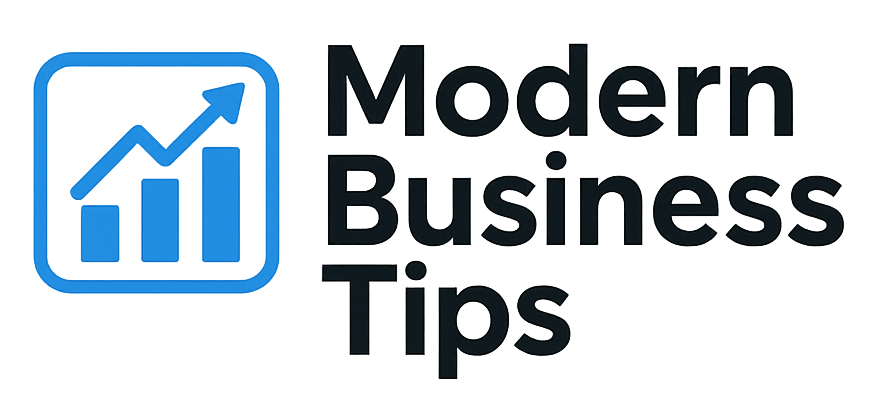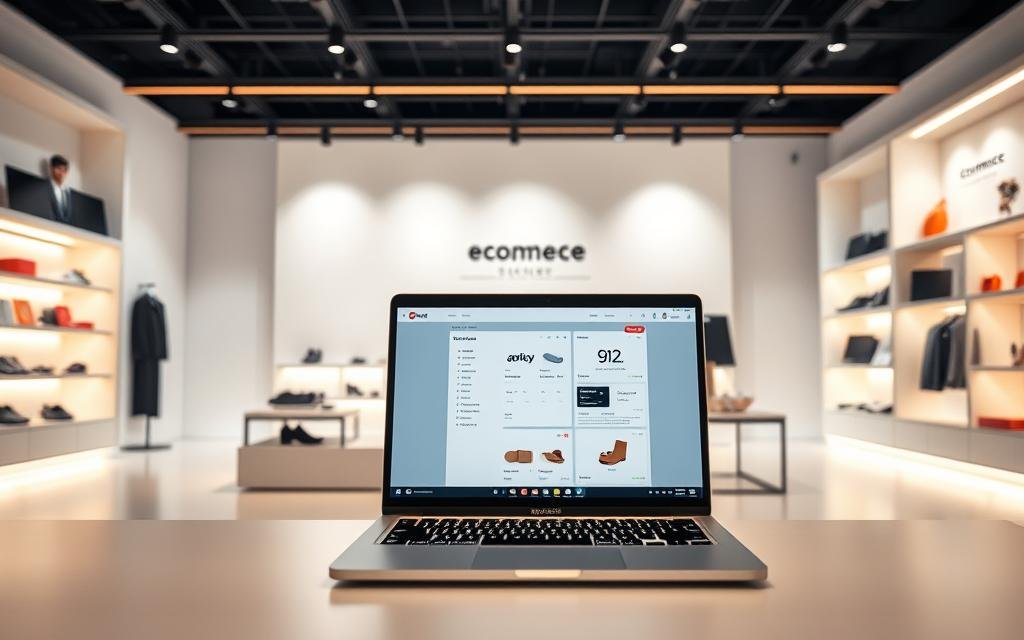Starting an e-commerce business is thrilling. It lets me mix creativity with business skills. I’ll cover the key steps to start an e-commerce business. With global e-commerce sales expected to hit $8.09 trillion by 2028, it’s a promising field.
Whether I want to create something unique or enjoy a flexible life, knowing how to start is essential. I need to be ready for challenges and plan well. This will help me succeed on this exciting journey.
Key Takeaways
- Understanding foundational steps is vital for starting an online store.
- The e-commerce sector is poised for remarkable growth, with huge sales projections.
- Thorough planning can help overcome challenges in launching an ecommerce business.
- Identifying my unique value proposition is key for my online shop’s success.
- A flexible lifestyle and creative expression are significant benefits of e-commerce.
Understanding E-commerce: Definitions and Types
E-commerce is key in today’s economy. It lets people buy and sell goods and services online. I’ll look into its definitions, types, and benefits.
What is E-commerce?
E-commerce means buying and selling online. It lets businesses reach more customers than ever before. This makes shopping easier for everyone, changing how we shop.
Different Types of E-commerce
Knowing the types of e-commerce is important for online sellers. There are four main types:
- Business-to-Consumer (B2C): Direct sales from businesses to consumers.
- Business-to-Business (B2B): Sales between businesses.
- Consumer-to-Consumer (C2C): Where people sell to each other.
- Consumer-to-Business (C2B): Individuals selling to businesses.
Benefits of E-commerce
E-commerce offers many benefits for businesses. It lets them reach more customers worldwide. This means more sales without the costs of a physical store.
It also makes shopping easier for consumers. They can shop anytime, anywhere.
Conducting Market Research
Doing thorough market research is key for my e-commerce success. Knowing my target audience well lets me make products and services they’ll love. I learn about their demographics, likes, and dislikes to craft a marketing plan that speaks to them.
Identifying Your Target Audience
Finding out who will like my products is a deep dive. I look at what customers say and how they buy things. This way, I can focus my marketing on the right people, matching what they want and do.
Analyzing Competitors
Looking at what my competitors do is important. I check their strong points and weak spots to figure out how to price and market my stuff. This helps me stand out and attract my target audience.
Understanding Industry Trends
It’s vital to keep up with what’s new in the market. Knowing about changes in what people want or new tech lets me update my business. For example, Anker Technologies grew by making products that fit what people were missing. Staying current with trends keeps me ahead.
| Research Component | Details | Importance |
|---|---|---|
| Target Audience | Demographics, preferences, pain points | Enables tailored marketing strategies |
| Competitor Analysis | Strengths, weaknesses, pricing strategies | Identifies points of differentiation |
| Industry Trends | Consumer behavior shifts, technology | Helps adapt offerings for relevance |
Choosing the Right Business Model
Choosing the right business model is key for my e-commerce journey. Business models affect how we operate, market, and make money. Knowing the differences between B2B and B2C models and the pros and cons of dropshipping versus inventory storage helps me make smart choices. I can also look into subscription services for a steady income stream.
B2B vs. B2C E-commerce
The B2B model is for companies buying from other companies. It deals with large quantities and complex sales. On the other hand, B2C sells directly to consumers, focusing on user experience and marketing. Knowing which model fits my vision helps streamline operations and target the right audience.
Drop Shipping vs. Inventory Storage
Dropshipping and inventory storage are two ways to manage goods in e-commerce. Dropshipping lets me sell items without holding inventory, saving on upfront costs. It’s risk-free but may mean lower profits and less control over shipping. Inventory storage means buying products in advance and managing them until sold. It offers better control and shipping times but requires a big initial investment and ongoing stock management.
Subscription Services
Subscription services are popular in today’s digital world. They provide a steady income by delivering products regularly. This model builds customer loyalty and simplifies marketing. Starting a subscription service can lead to long-term success, appealing to those who value convenience and consistent value.
| Business Model | Advantages | Challenges |
|---|---|---|
| B2B | Higher transaction values, long-term contracts | Long sales cycles, complex negotiations |
| B2C | Larger customer base, quicker sales | High competition, need for strong branding |
| Dropshipping | Low startup costs, no inventory risk | Lower profit margins, less control over delivery |
| Inventory Storage | Better control over stock, faster shipping | Higher upfront costs, ongoing storage management |
| Subscription Services | Predictable income, customer loyalty | Need to consistently deliver value, managing churn |
Selecting Your Niche
Choosing the right niche is key for my e-commerce business. It means finding something I love that people want. A good niche boosts my success chances and lets me offer products that meet needs.
Evaluating Market Demand
I start by checking if people want what I’m thinking of. I look at trends and what people like. Google Trends and industry reports help see what’s popular.
Knowing when things are in demand or not is also important. This can change how I pick my niche.
Finding Your Unique Selling Proposition
Then, I work on what makes my products stand out. A unique selling proposition (USP) shows why my stuff is better. It could be because it’s high quality, affordable, or has special designs.
This helps draw in customers and increase sales.
Testing Your Niche Idea
Testing my niche idea is a must before going all in. I try it out with a small group to get feedback. I use things like interviews and surveys to see if people are interested.
Building Your E-commerce Website
Creating my e-commerce website is a key step in starting my online business. First, I pick a domain name that shows my brand and is easy to remember. This choice helps my website be seen and trusted by customers. Next, I choose an e-commerce platform to help run my business. Platforms like Shopify or WooCommerce offer tools for different needs and skills.
Choosing a Domain Name
A good domain name is key for my website’s success. It should show my brand, be easy to remember, and simple to type. Here’s what I look for:
- Keep it short and simple
- Use relevant keywords
- Avoid numbers and hyphens
- Check its availability and trademark issues
Selecting an E-commerce Platform
Choosing the right platform is vital for my online store’s function. There are many options for different needs:
| Platform | Best For | Ease of Use | Cost |
|---|---|---|---|
| Shopify | Small to medium businesses | Very easy | Starts at $29/month |
| WooCommerce | WordPress users | Moderately easy | Free (with hosting costs) |
| BigCommerce | Growing businesses | Easy | Starts at $29.95/month |
Essential Website Features
To make my e-commerce website work well, I focus on key features. These improve user experience and make running the site easier. Important features include:
- User-friendly navigation
- SEO-optimized product descriptions
- Integrated payment gateways for seamless transactions
- Mobile-responsive design
Setting Up Payment and Shipping Options
Setting up good payment and shipping options is key for my e-commerce business. These choices greatly affect how happy customers are and how easy it is to shop. I need to pick reliable payment gateways and shipping companies to improve my business.
Payment Gateway Solutions
Choosing the right payment platforms is important. I look for options like PayPal or Stripe that handle many types of payments. This makes my business more trustworthy and helps customers feel secure.
Shipping Providers and Rates
Finding the best shipping solutions means comparing rates, delivery times, and reliability. I aim to meet customer expectations for quick and cheap shipping. Using detailed shipping guides helps me make the right choice. Many e-commerce sites also have tools to show shipping costs upfront.
Handling Taxes and Regulations
It’s vital to understand taxes and e-commerce laws to stay compliant and avoid legal trouble. Each state has its own rules, affecting how I handle sales tax. Keeping up with tax law changes is essential for my business’s growth and customer trust.
Creating Your Brand Identity
Building a strong brand identity is key to standing out in the e-commerce world. A unique logo, a consistent brand voice, and a clear mission statement make a big impact. Together, they leave a lasting impression on your audience.
Designing Your Logo
A memorable logo is often the first thing people see. It should capture the heart of your brand. Using colors, fonts, and symbols that speak to your audience helps them remember you.
Developing a Brand Voice
Having a consistent brand voice is vital for connecting with your audience. It shows your brand’s personality in every piece of content. A strong voice builds trust and engagement, making it easier to connect with customers on an emotional level.
Crafting Your Mission Statement
A clear mission statement is the backbone of your e-commerce business. It outlines your core values and purpose. By sharing your goals and values, you attract customers who believe in what you stand for.
Marketing Your E-commerce Business
Marketing my e-commerce business is key to getting more customers and keeping them loyal. I use social media, email marketing, and SEO to reach more people and keep them engaged. This helps my business grow and stay strong online.
Social Media Marketing Strategies
I use Instagram and Facebook to connect with more people. I make content that speaks to my audience. I post often, share deals, and interact with my followers to build a strong online community.
With paid ads, I can reach even more people. This helps turn casual visitors into loyal customers.
Email Marketing Best Practices
Email marketing is a big part of my strategy. I send out personalized newsletters and deals to keep my leads interested. I tailor my emails to different groups to make them more relevant.
This targeted approach boosts engagement and drives sales. It helps build a loyal customer base.
Utilizing SEO for E-commerce
SEO is essential for making my site more visible online. I find and use the right keywords to attract more visitors. I also focus on making my site easy to use and understand.
By improving these areas, I can get higher rankings in search results. This helps more people find my site and increases my online presence.
Analyzing Performance and Making Adjustments
To keep my e-commerce business thriving, I must always analyze its performance. I track important metrics like conversion rates and customer lifetime value. These help me see what’s working and what needs a tweak.
Using tools like Google Analytics helps me understand my website better. It shows me how many people visit and what they do. This info lets me improve my marketing and products to meet customer needs.
Listening to customer feedback is key to my success. It helps me make my store better for everyone. By making changes based on what customers say, I improve my products and keep my customers happy. This cycle of checking performance, using data, and making changes based on feedback keeps my business growing and adapting.



